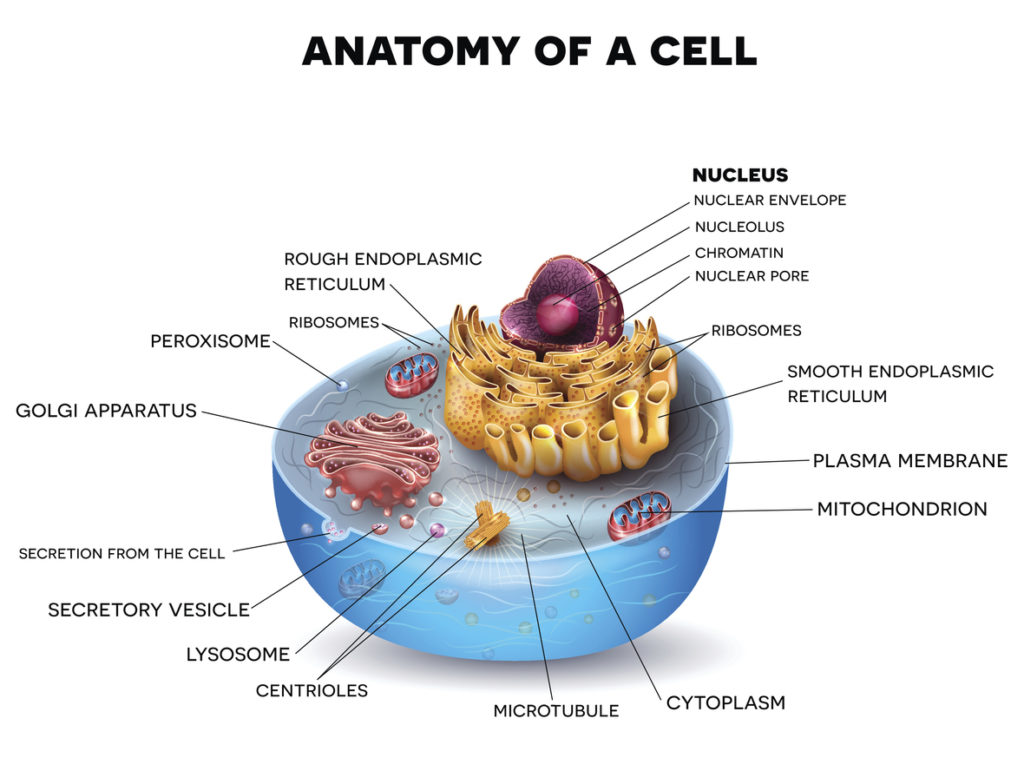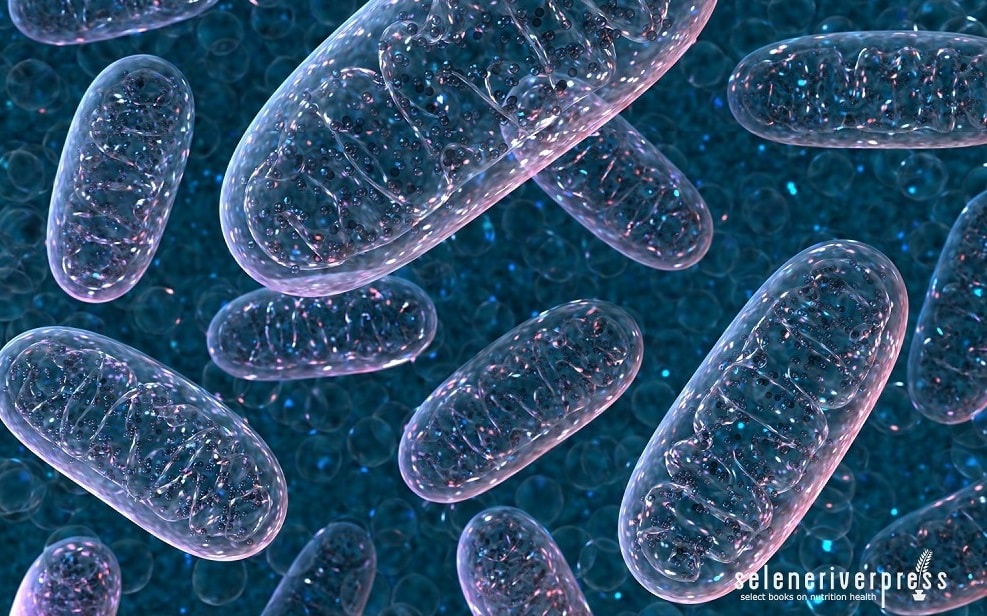As a member of the Weston A. Price Foundation, I’m privy to a wonderful publication called Wise Traditions. This quarterly journal delves into nutrient dense foods as well as health issues discussed by top-rated doctors, scientists, and other holistically minded people. It’s easy to read and absorb, and one of the things I like best is that it comes by mail right to my home. (Smile)
This beautiful journal is also FREE when you become a WAPF member. How utterly wonderful to curl up or travel with a hard copy magazine instead of straining my eyes staring at a computer screen!
An article that recently appeared in the fall 2019 issue addressed the mitochondria, a little understood but extremely important part of all the cells in the human body. The article explains one reason why supposedly healthy people who eat well, exercise, meditate, and avoid unhealthy habits still sometimes get sick and even develop cancers.
These occurrences are not rare. We often learn of people who have never smoked or been subject to any other known cancer-causing agents still develop cancer. Why is that? Using the information in this article about the mitochondria, I thought it important to give my readers a basic understanding of this precious part of our body, including how we can nourish it and maintain superior cellular health even as we grow older. If that’s of interest to you, please keep reading.
About the author: The article, titled “The Mitochondria: Key to Health and Longevity,” was written by Dr. Wayne Feister, an osteopathic physician based in Ohio. Unfortunately, he has no official website, but you can find his contact information here. His bio reads in part: “Dr. Wayne Feister has had a 33-year general practice as an osteopathic physician in Rawson, Ohio, and specializes in musculoskeletal pathology. He received his degree in osteopathic medicine from Ohio University College, completed his internship at Osteopathic Hospital in Michigan and is certified in prolotherapy and sclerotherapy. He is vice president of both the American Osteopathic Association of Prolotherapy Regenerative Medicine and the Ohio Academy of Osteopathy, served as past chair of the Osteopathic Principles/Practices Committee (Centers for Osteopathic Research/Education) and is also a member of the International College of Integrative Medicine”
Allow me to break down the most important portions of his extensive article into a fairly uncomplicated blog post to discuss what the mitochondria is and why it’s so special.
What Are Mitochondria?
Dr. Feister describes the mitochondria (which is plural; mitochondrion is the singular) as a vitally important part of every cell in our body. He also explains that our cells contain other important parts, which are known as “organelles.” These include the nucleus, the Golgi apparatus, the centrioles, and the mitochondria.
Mitochondria are not confined to humans and exist in all forms of life. According to Dr. Feister, “Having a unique DNA similar to the DNA of bacteria, mitochondria are actually a kind of parasite that lives in all organisms. By scientific estimate, eight to two thousand mitochondrial hitchhikers live in every cell of the human body.”
The mitochondria, as defined by Dr. Feister, are the keys to energy and longevity, which is why it holds a special place in the cell. By the end of this blog post, you’ll be on a whole different plane regarding why and how you should take special care of your cellular health—not something we generally discuss when we seek superior health.
Rather than get into the scientific portions of the article, I will use the remainder of this blog post to outline important health habits, superior foods, and whole food supplements that can make a difference in maintaining superior mitochondria health. However, I will continue to paraphrase and quote from interesting parts of Dr. Feister’s article.
What Does Mitochondria Do?
The primary role of the mitochondria is to produce energy. It’s responsible for generating 90 percent of the body’s stamina. When you have healthy mitochondria, your overall performance is dramatically elevated and your body is able to perform some of the most vital functions necessary for a happy existence. These include breathing, thinking, talking and walking.
How does this work? The mitochondrion utilizes oxygen to metabolize carbohydrates, fats, and proteins. Think normal healthy weight—maybe there’s no need to diet if you have a healthy mitochondria!
Without good-quality oxygen, the mitochondria cannot efficiently convert ADP (adenosine diphosphate) to the energy-packed ATP (adenosine triphosphate). “Called the Krebs’s cycle,” explains Dr. Feister, “this process is a marvel of cellular biology, producing thirty-eight ATPs per molecule of glucose burned.”
In discussing the oxygen issue, Joseph Antell, a long-time Standard Process practitioner, advocates not only nutrient dense foods and good fats but also the importance of aerobic exercises and a powerful whole food supplement, Cataplex E2, which holds oxygen in the tissue.
Cataplex E2 is recommended for those with respiratory conditions, but it’s also used by world-class climbers and other sports enthusiasts, as noted by Dr. Jacob Schor of the Denver Naturopathic Clinic in this blog post, from which I quote (emphasis mine):
“Cataplex E2 somehow increases the ability of red blood cells to deliver oxygen to the tissues. So it is frequently used to help conditions like congestive heart failure, emphysema and the like. I first learned the altitude trick from Dr. Clive Armstrong on a ski trip a few years back. Clive, who regularly leads high altitude climbing expeditions to South America or the Himalayas, swears by it.”
(Personal note: I also take Cardio-Plus, which contains heart support and includes Cataplex E2.)
There are many aerobic exercises we can use in our quest to maintain a healthy mitochondria. Aerobic activity, which works large muscles in your arms, legs, and hips, elevates your heart rate for a sustained period of time.
Good examples of aerobic exercises:
- Jogging
- Brisk walking
- Swimming laps
- Aerobic dancing (like Zumba)
- Cross-country skiing
- Stair climbing
- Cycling
- Elliptical training
- Rowing
Sugar: A Major Impediment for Healthy Mitochondria
Unfortunately, many of us overconsume sugars—especially fructose, which is a known cause of diabetes. According to Livestrong (emphasis mine): “Fructose is metabolized by the liver much more quickly than other sugars. Whatever fructose the liver doesn’t convert to glucose—your body’s main source of energy—is converted to fat. Excess fructose consumption can lead to the build-up of fats in the liver and a condition called nonalcoholic fatty liver, as well as raise levels of triglycerides, which contributes to high blood pressure and heart disease.”
High Fructose Fruits & Vegetables
Here is an informative list of high-fructose fruits that you should consider staying away from, or at least eat in very small quantities—especially if you are diabetic, trying to lose weight, or are fructose intolerant. The list has some of my favorites, but alas, knowing how can damage the mitochondria, I will surely be tempering my appetite for them.
It’s also important to pay attention to high-fructose vegetables. Livestrong has a comprehensive list of them here. Were these lists not so long, I would include them in this article. But hopefully you will look them over and make an effort to avoid high-fructose fruits and vegetables, or learn to consume them in moderation. (Also, this sounds like a good reason to read Dr. Bruce Fife’s latest book, Fat Heals, Sugar Kills.)
How Glucose Can Compromise the Mitochondria
In his article, Dr. Feister states the following: “Mitochondria burn two main fuels: glucose (sugar) and ketones (a normal, carbon-based metabolic product). Because the standard American diet (SAD) supplied by modern food producers has given rise to a widespread sugar addiction, most people tend to burn glucose. Glucose can be considered a ‘dirty fuel’ because its metabolism produces ROS. It is also highly addictive; its removal from the diet can lead to common withdrawal symptoms such as headaches, nausea, malaise and lightheadedness. After becoming more informed about diet and nutrition, replacing a sugar-based diet with a diet based on healthy fats is, therefore, essential. Ketones—made from fat—are the preferred mitochondrial fuel because they are clean-burning, healthy and produce less ROS.” (Emphasis mine.)
For reference, “ROS” stands for reactive oxygen species. Also allow me to elaborate that healthy fats, as mentioned in the quote, include coconut oil, raw and/or cultured butter, and other saturated animal fats. Click here for a list of thirteen foods that won’t raise blood glucose.
The Good Fats and the Bad Fats
Coconut oil and animal-based fats such as raw and/or cultured butter, lard, and tallow will not only keep your skin supple and wrinkle free but also contribute to the overall health of your mitochondria. I highly recommend reading “The Skinny on Fats” to learn vitally important information on why you should transition from vegetable oils to animal fats. And do pass this article around among your friends, family, and clients. It may save your life or the life of someone you love.
The Most Nutrient Dense Foods (Stuff the Mitochondria Will Love)
One of the more popular pages on my website Traditional Cook is a list of the 14 super foods recommended by Sally Fallon Morrell. I include these foods below, but click here for explicit information on each of these super foods and how they can keep you in tip-top cellular health.
The Fourteen Super Foods
- Butter from grass-fed cows (preferably raw)
- Oysters
- Liver from grass-fed animals
- Eggs from grass-fed hens
- Cod liver oil (recommend Green Pasture or Tuna Omega-3 Oil from Standard Process)
- Fish eggs
- Whole raw milk from grass-fed animals
- Bone broth
- Shrimp
- Wild salmon
- Whole yogurt or kefir
- Beef from grass-fed steers
- Sauerkraut (homemade)
- Organic beets (and beet kvass)
A Specific Mitochondria Whole Food Supplement
I highly recommend Cellular Vitality from Standard Process. Please click on the product link for an explanation of what it does to nourish the critical m itochondria portion of the cells.
itochondria portion of the cells.
Recipe for Mitochondria Health
- Aerobic exercises
- Elimination or extreme reduction of sugar.
- Transition to healthy fats and increased ketone levels (see Ketone Therapy by Dr. Bruce Fife for more information).
- Include the 14 super foods in your diet.
Afterthoughts from the Traditional Cook
- Mitochondria generate 90 percent of the body’s energy, powering the cells to perform vital functions.
- Mitochondria burn two main fuels: glucose and ketones. Because the standard American diet has given rise to a widespread sugar addiction, most people tend to burn glucose.
- When the mitochondria are healthy, a person is generally healthy.
- Mitochondrial deficiency can give rise to symptoms in virtually any organ or tissue.
- Many factors—chemicals, foods, modern lifestyle habits and electromagnetic fields—have been implicated as causes of mitochondrial dysfunction.
- In cancer, the mitochondria change first—before any gene coding changes—which undermines the “gene theory” premise of conventional cancer explanations.
- Dysfunctional mitochondria can trigger a series of cellular processes that result in insulin resistance (diabetes).
- Feeding and nourishing mitochondria with wholesome ketones—which do not require insulin—can help restore mitochondrial health and relieve brain starvation in individuals with cognitive impairment.
- AMPK is an enzyme responsible for multiple metabolic functions. AMPK and mitochondrial imbalances can initiate a cascade of inflammatory changes related to disorders such as obesity and diabetes.
- As key elements for cellular energy production, AMPK and mitochondria require nutrient and lifestyle changes when imbalanced.
- Supporting mitochondrial health can help control the aging process as well improve overall health.
—Quoted from “The Mitochondria: Key to Health and Longevity” by Wayne Feister.
Disclaimer from Maria Atwood, CNHP: I am a Certified Natural Health Professional, CNHP, not a medical doctor. I do not diagnose, prescribe for, treat, or claim to prevent, mitigate, or cure any human diseases. Please see your medical doctor or health practitioner prior to following any recommendations I make in my blog posts or on my website.
Images from iStock/wir0man (main), TefiM (cell), Szakaly (lard), Ridofranz (woman in the pool), LightFieldStudios (coconut).



